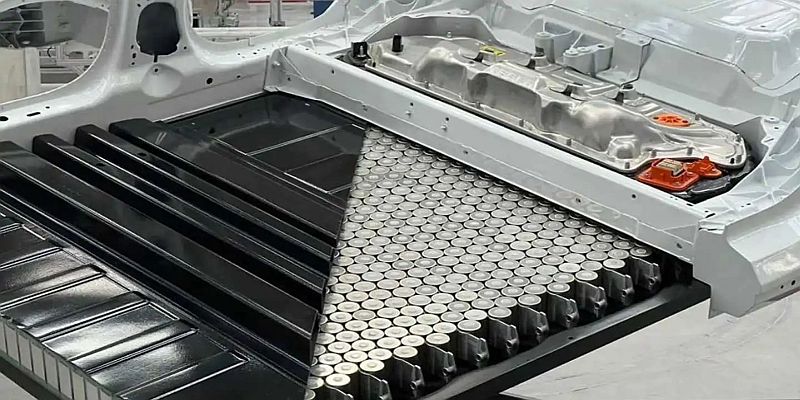Powering Sustainability Through EV Battery Manufacturing for A Greener Future

To achieve global Net Zero emissions by 2050, manufacturers are embracing more sustainable practices. A key player in this has become the electric vehicle (EV) sector which is expected to account for 60% of global car sales by 2030. This means that EV batteries have become a crucial enabler in the shift from traditional fossil fuels to cleaner, renewable energy sources.
The global EV battery market is set to grow from $132.6 billion in 2023 to $508.8 billion by 2033, representing a compound annual growth rate of 14.4%. This surge is driven by a combination of environmental awareness about climate change and air pollution, and government policies that are accelerating the adoption of EVs. The result has seen an increase in the construction and planning of battery manufacturing plants across Europe and North America.
Additionally, advances in battery technology are driven by the need for increased driving range, faster charging times, and improved overall performance.
The battery ecosystem
Of course, there are various complexities to consider when it comes to the EV battery market. It provides a clear example of the circular economy in action where resources are kept in use for as long as possible and waste is minimised.
The lifecycle of an EV battery begins with the extraction of raw materials such as lithium, cobalt, and nickel. This upstream process is followed by the midstream stage where these materials are transformed into the critical components for battery cells. The downstream process sees the individual cells assembled into battery packs that power EVs. Finally, the end-of-life phase puts the spotlight on responsible battery recycling. As such, recycled materials can be reintroduced into the upstream, midstream and downstream processes, promoting a closed-loop system that reduces waste and reliance on virgin materials.
Understanding the process
One of the key focuses in EV battery manufacturing facilities is the clean and dry rooms. These rooms enclose the majority of the production lines to ensure tightly controlled environments specifically designed to eliminate threats posed by moisture and contaminants, which are vital for maintaining battery integrity during production. Without such measures, risks such as electrode corrosion, short circuits, and thermal runaway pose significant threats to battery performance and safety.
Regulations play a crucial role in shaping the future of EV battery manufacturing. They ensure safety, promote sustainability, and enforce ethical sourcing of raw materials. For instance, regulations such as the UN Model Regulations and the EU's Conflict Minerals Regulation guide manufacturers towards safer and more environmentally responsible practices. There is also the New European Battery Regulation (NBR) that enforces stringent standards to ensure that battery manufacturing adheres to safety, sustainability, and ethical sourcing guidelines.
For our part, one of the many solutions WSP has spearheaded is the development of a simulation Battery Optimisation Lifecycle Tool (BOLT). This analysis heavy-duty fleet electrification and optimisation to help public and private transit fleet operators determine quickly which routes are best suited for conversion to electric buses. BOLT can simulate a transit agency’s entire route system and create a system network Electrifiable Index that identifies the routes/scheduled blocks that can be electrified today.
Future potential
Fortunately, the battery technologies that power EVs are continually evolving. Currently, lithium-ion batteries offer high energy density and longevity but rely heavily on mining practices that have significant social and environmental impacts. This is where emerging technologies like sodium-ion and solid-state batteries present alternatives that might reduce these impacts due to their readily available raw materials, potentially lower toxic material use and higher efficiency.
Developing better, more sustainable EV batteries must therefore become a priority. More efficiently using resources to minimise waste and reduce reliance on virgin materials through closed-loop systems is essential. Ethical sourcing practices that ensure raw materials are extracted under fair working conditions are also vital.
Consider a world where EVs can travel just as far as fossil-fuel-powered cars on a single charge. That future hinges on developing batteries that pack more energy into a smaller space. Creating longer-lasting batteries also means fewer replacements are needed, thereby reducing the environmental impact and overall costs associated with battery production.
By focusing on technological advancements, safety, and regulatory compliance, and by embracing a circular economy, we can ensure that the growth of the EV market contributes positively to global environmental goals.
WSP in Africa is hiring! To find out more about available opportunities, check out the Careers page on our website or look out for updates on our LinkedIn page, @WSPinAfrica.
By Diederik Venter,
Discipline Lead: HVAC, Medical Gases and Industrial Utilities, WSP in Africa
WSP provides engineering and design services to clients in the Transportation & Infrastructure, Property & Buildings, Environment, Energy, Resources (Mining) and Industry sectors, as well as offering strategic advisory services.
